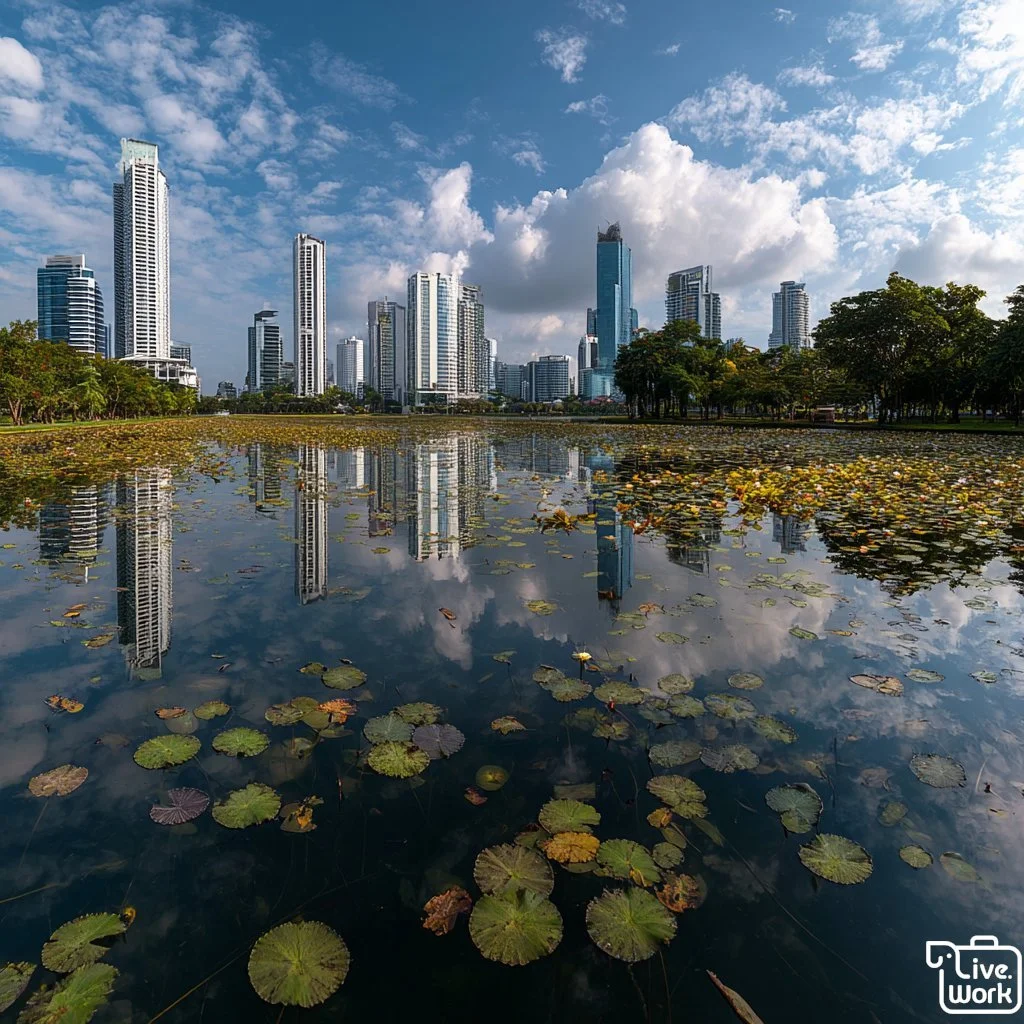Bangkok’s Green Lungs: A Deep Dive into the City’s Vital Urban Ecosystems
While Bangkok is known globally for its bustling markets, glittering temples, and dynamic skyline, few realize that the Thai capital is also home to thriving green sanctuaries—its so-called “Green Lungs.” These precious natural havens are more than aesthetic retreats; they are ecological lifelines for a rapidly urbanizing metropolis.
🌿 What Are Bangkok’s “Green Lungs”?
The term "Green Lungs" refers to the city’s green spaces that act like lungs—absorbing carbon dioxide, releasing oxygen, and refreshing the urban atmosphere. The most famous of these is Bang Krachao, a man-made island in the Chao Phraya River located in the Phra Pradaeng district. Despite being just across the river from Bangkok’s commercial core, Bang Krachao offers a lush contrast: a sprawling patchwork of mangroves, fruit orchards, elevated bike trails, and peaceful temples.
Designated by Time magazine as the “Best Urban Oasis in Asia,” Bang Krachao has long been shielded from high-rise development thanks to royal decree and community efforts. But it's not the only green sanctuary in the city. Parks like Lumphini Park, Benjakitti Forest Park, and Chatuchak Park also contribute significantly to Bangkok’s green infrastructure.
🌳 Ecological Importance and Biodiversity
These urban green spaces are more than recreational assets—they’re critical ecosystems that support birds, reptiles, insects, and indigenous plant species. In Bang Krachao alone, you can find:
Over 60 bird species, including herons, kingfishers, and bee-eaters
Native flora like banyan trees, nipa palms, and lotus
Numerous species of butterflies and other pollinators crucial for biodiversity
Green spaces help filter air pollutants, reduce urban temperatures, and offer stormwater management by acting as natural water catchment areas. In a city prone to flash floods and rising temperatures, these are vital services.
🏞️ Social and Cultural Significance
Bangkok’s green lungs also serve as cultural and recreational hubs. Locals and tourists alike flock to these spaces for:
Cycling and walking trails
Weekend floating markets (such as Talad Nam Bang Nam Phueng)
Community gardens and cultural workshops
Yoga, tai chi, and outdoor fitness activities
Such spaces promote mental well-being, reduce stress, and strengthen community ties—especially in an otherwise high-density urban environment.
🛠️ Urban Sustainability and Planning
Bangkok’s green areas are increasingly seen as part of its urban resilience strategy. Projects like the Benjakitti Forest Park expansion show the city’s commitment to sustainable urban planning. This park features:
Constructed wetlands to filter water
Elevated walkways through restored forest ecosystems
Smart lighting and eco-friendly materials
These developments not only provide carbon sinks but also serve as living laboratories for urban sustainability, inspiring similar initiatives in other ASEAN cities.
🚴♂️ Responsible Tourism and Conservation
Visitors can contribute to the preservation of these areas by:
Choosing eco-friendly activities like biking tours in Bang Krachao
Supporting local markets and sustainable businesses
Avoiding littering and respecting wildlife habitats
Engaging in community-led volunteer programs for conservation
Tourism, when approached mindfully, can boost local economies and fund conservation efforts, creating a virtuous cycle of protection and appreciation.
🌱 Final Thoughts: A Breath of Fresh Air
Bangkok’s green lungs are more than just scenic escapes—they are essential lifelines that sustain the city’s ecological, social, and economic health. As Bangkok continues to grow, integrating and protecting these green spaces will be critical in shaping a livable, resilient future.
So next time you’re in the city, trade the traffic for a bike ride under coconut palms in Bang Krachao or a quiet moment by the lake in Lumphini Park. The true soul of Bangkok might just be where the trees grow tallest.
